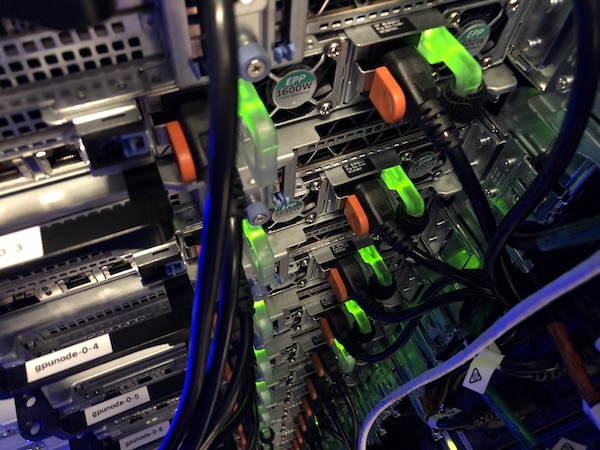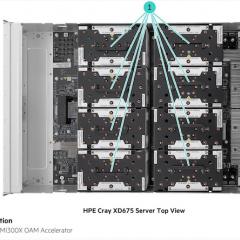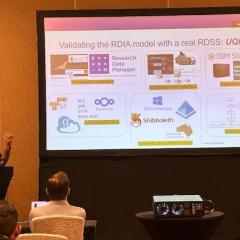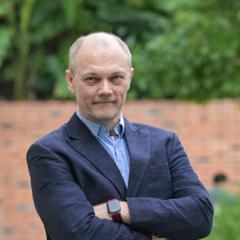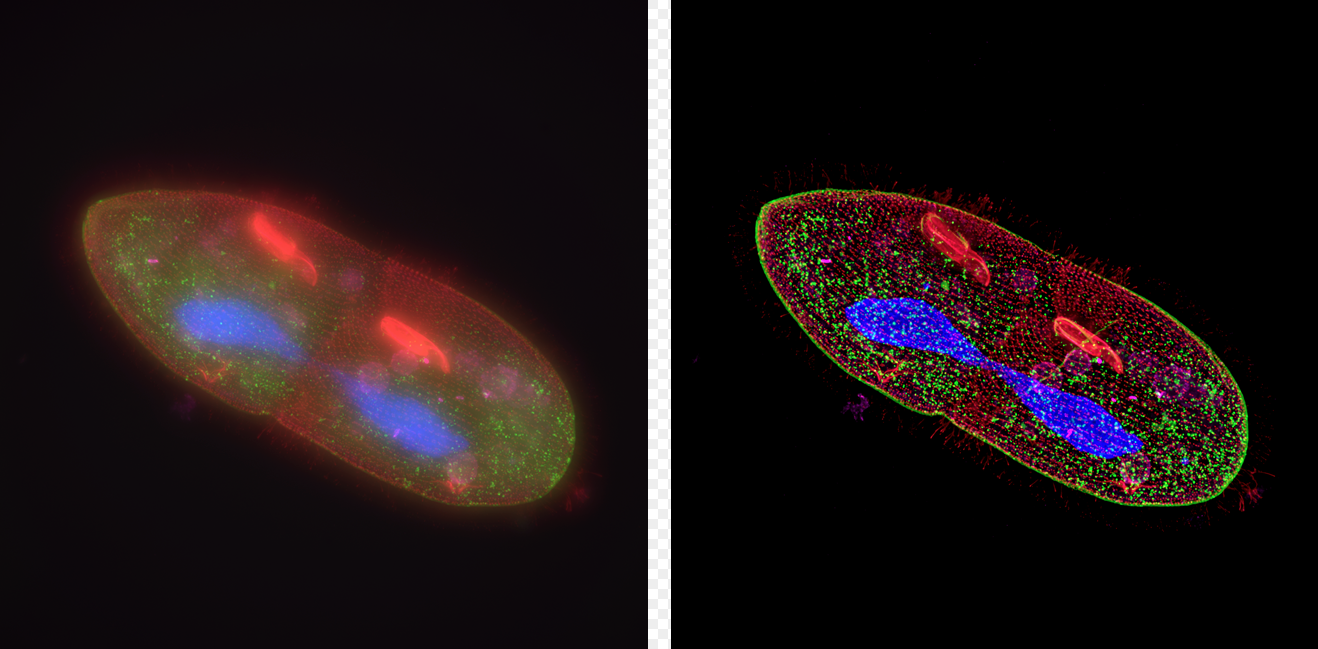
Research into human diseases will step to the next level when a powerful supercomputer is built at UQ’s Queensland Brain Institute.
The supercomputer is the first of its kind outside of the United States and the first in the Asia-Pacific region to feature hardware designed specifically to accelerate extremely high-resolution image processing from microscopy facilities.
The supercomputer — named Wiener after Norbert Wiener, the mathematician who devised an algorithm to remove blurriness and other ‘noise’ in images — will expedite the pace of research and potential new discoveries.
Wiener is currently being assembled by the Queensland Brain Institute and trialled at UQ under the management of UQ’s Research Computing Centre (RCC). It should be fully operational by February 2018.
Wiener was developed with strategic funding from UQ and a consortium of the university’s various cutting-edge microscopy facilities housed within the Centre for Microscopy and Microanalysis (CMM), Institute for Molecular Bioscience (IMB), and Queensland Brain Institute (QBI).
Initial pioneering research using Wiener will focus on research at IMB into cancer biology, inflammation and infection, and QBI’s cutting-edge whole of brain connectome analysis – a project to categorise and isolate brain wiring that may be the cause of many human brain developmental disorders, many of which are yet to be classified.
The supercomputer will support UQ’s new world-class IMB-based Lattice Light Sheet Microscope (LLSM).
The LLSM, the result of funding from the Australian Cancer Research Foundation and the Australian Research Council, is one of only a handful of prototype instruments in the world and the third in Australia.
IMB Professor Jenny Stow said the LLSM gives researchers the ability to visualise cell behaviour at exceptional speeds to produce full 4D movies of cells in real time, allowing the detection of small but critical changes introduced by gene mutations or drug treatments.
“We will be able to detect and study differences in behaviour of highly metastatic, hard-to-treat tumour cells and those from less aggressive tumours,” said Professor Stow.
“This combination of microscopy and image processing [with Wiener] on unprecedented scales, will really advance biomedical research and drug development.”
QBI Deputy Director (Research) Professor Linda Richards, who is leading the brain connectome project, said researchers will use Wiener to analyse brain MRI data to obtain detailed maps of brain connectivity.
"Understanding how brain connections vary between people and in people with brain disorders will underpin new discoveries in brain structure and function and new diagnostic tools," she said.
Data-intensive research such as MRI and microscopy imaging is capable of generating several terabytes of data in just a few minutes, so researchers need high-powered computers to process the data.
Wiener will not only help cut down the time to process such huge amounts of data that modern scientific imaging requires, but will also have additional functions to process data in new ways.
A current challenge in molecular biology is capturing images of moving microbes and cells under the microscope because – just as with a typical camera, movement causes blur. The 'noise' in these images needs to be removed using computer algorithms, which is extremely intensive and expensive work that many computers are not able to manage.
Wiener will be able to process the images much quicker than any currently available technology, saving valuable research and discovery time.
Computational neuroscientist Professor Geoff Goodhill, from QBI and the School of Mathematics and Physics, uses deep learning techniques to help understand how information is coded in biological neural networks. His recent research in spontaneous brain activity in zebrafish showed their environment impacted how the fishes’ brains wired up during development.
"Wiener will dramatically increase the speed at which we can derive new insights from experimental data, and also test new hypotheses about nervous system function," he said.
Wiener is being built by RCC and QBI research computing specialists using cutting-edge Dell servers and graphics processing units from nVidia. The supercomputer will connect to UQ’s award-winning MeDiCI data storage pipeline, for fast data transport.
For RCC Director Professor David Abramson, Wiener rounds out the computational infrastructure at UQ. “Wiener leverages the outstanding price-performance of graphics accelerators, originally developed for the gaming market,” he said.
“Even though these chips were developed to make graphics operations very fast, we are seeing new applications emerging in imaging, chemistry, physics, materials science and machine learning.”
QBI Senior IT Manager (Research) Jake Carroll said the balanced and innovative architecture that the team had put together for Wiener in partnership with Dell EMC represented the logical extension of UQ’s scientific instruments and research infrastructure.
"If we want the biggest scientific outcomes and things that can change the quality of people’s lives, we must be prepared to push the boundaries, maximising the utility and efficiency of our world-class scientific instruments," he said.
A supercomputer is a device that allows many parallel calculations and has processing potential many hundreds of thousands of times faster than a normal computer.
